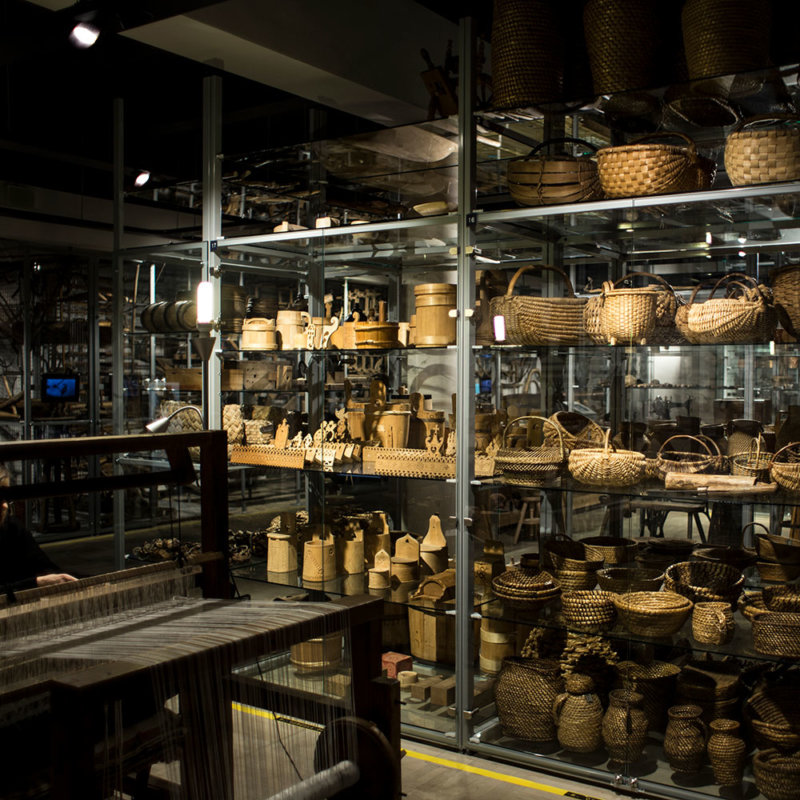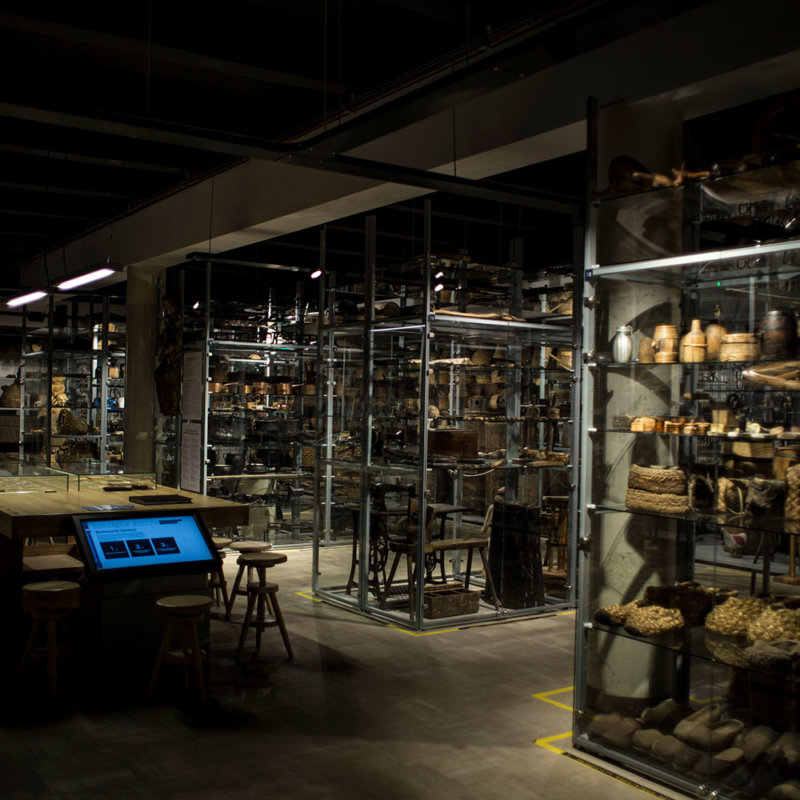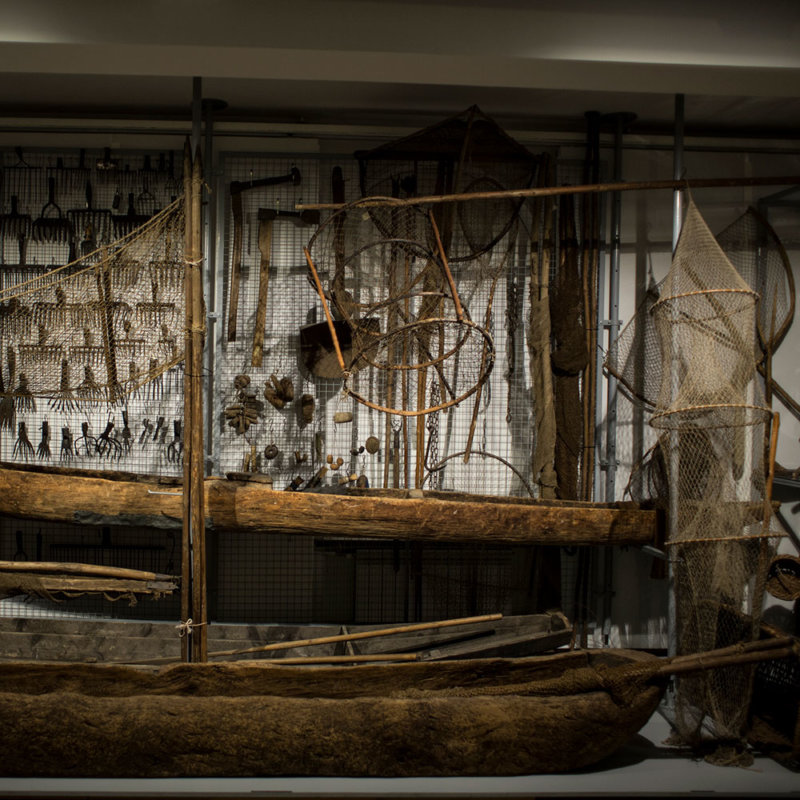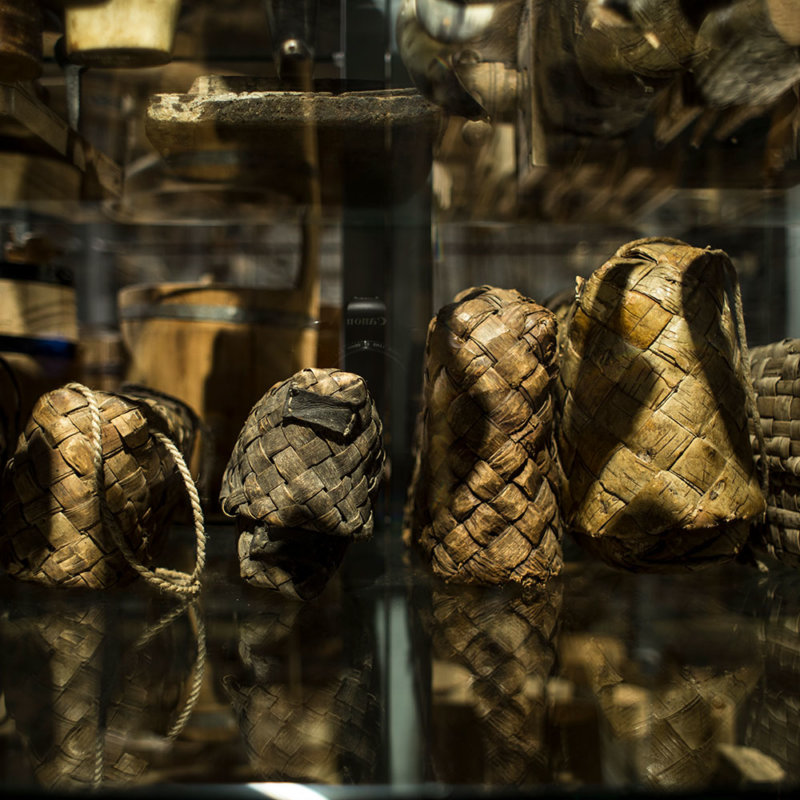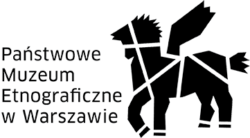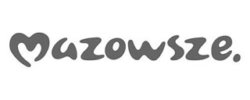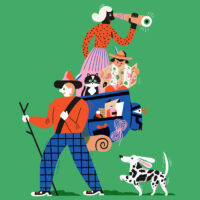For the first time in the history of Polish museology a collection storeroom, a place usually off-limits for non-employees, has been made available for visitors.
A great number of tools used for farming, animal husbandry, gathering, fishing, apiculture, and handicraft is stored here, everything in a perfect order. The oldest objects come from the mid-19th century, the newest ones – handicraft objects or self-made tools – were made in the 1970s.
The storeroom entered the modern age and nowadays it also uses new technologies. Digital frames present archival video recordings documenting the way the collected objects were used, and a multimedia kiosk shows photographs and articles about them.
A worktable takes up the exhibition’s centre, where you can find any of the displayed objects in a digital collection inventory and read its card in an academic catalogue. Moreover, visitors are also able to see other secret tools of an ethnographer – questionnaires, field notes, reports, and photographs taken during work.
The unique classification of museum objects was a brainchild of Piotr Szacki, an eminent museologist and employee of the National Ethnographic Museum in Warsaw in 1962-2004.











